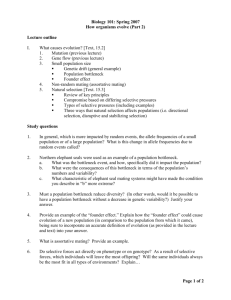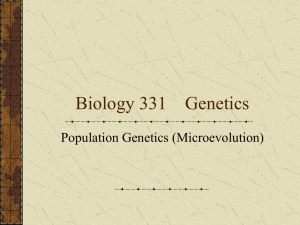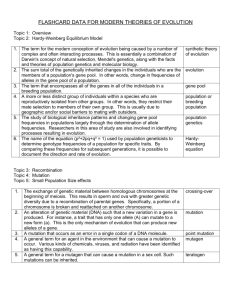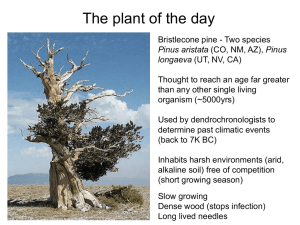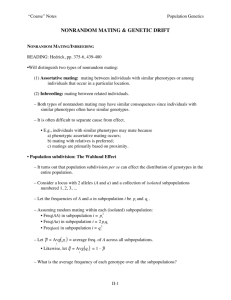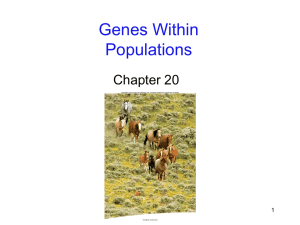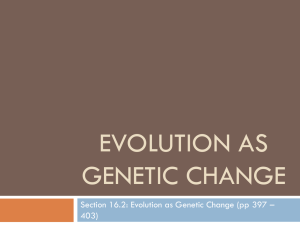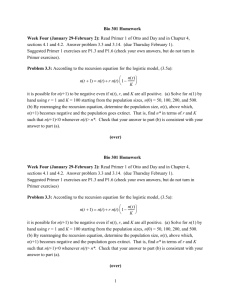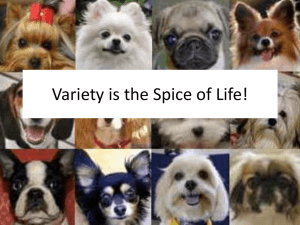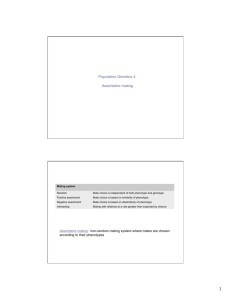Weak Forces of Evolution
advertisement
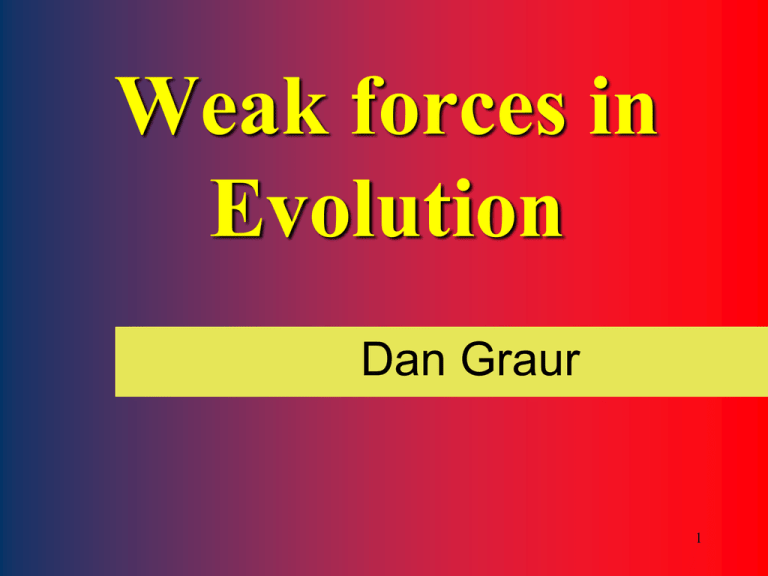
Weak forces in Evolution Dan Graur 1 1. 2. 2 Mating 3 Deviation from randomness: By genetic similarity: Assortative mating Disassortative mating By genetic relatedness: Inbreeding Outbreeding 4 5 disassortative assortative 6 Human assortative mating: Rule #1 7 Strong assortative mating by skin color in the US Percentage of non-hispanic whites: 80% Percentage of blacks: 13% Expected percentage of interracial marriages: 10.4% Observed percentage of interracial marriages: 0.9% Ratio of white female/black male = 2:1 black female/white male 8 Assortative mating is very strong in humans even with respect to non-genetic traits. 9 Degrees of inbreeding found in nature: 10 11 Inbreeding is usually forbidden… P = Ptolemy C = Cleopatra P ix Cv P xii C vii An exception! 12 The fish Rivulus marmoratus exhibits the most extreme form of inbreeding: Selfing 13 Random mating equilibrium allele frequencies 14 Assortative mating excess homozygotes 15 Disassortative mating excess heterozygotes 16 Even if extreme deviations from random mating occur in all generations, allele frequencies remain constant. 17 Mating pattern is not an important evolutionary force 18 Clinical effects of inbreeding P.T. Barnum + Tom Thumb 19 Clinical effects of inbreeding 20 21 Migration 22 23 Migration will cause changes in the allele frequencies of each of the two subpopulations. 24 However, because of gene flow, the two subpopulations are, in fact, one population, in which allele frequencies do no change. 25 Genotype frequencies will change in a similar fashion to that in disassortative mating. 26 Migration is not an important evolutionary force 27 Mutation Mutation: A transmissible change in the genetic material 28 Mutations are the ultimate source of variation. Only mutations can create genetic novelty. 29 Mutations arise all the time. Per definition, the initial frequency of a mutation in a diploid * population is 1/2N. *N = population size 30 The human population on October 31, 2011 was estimated to be 7 billion people. The number of alleles at an autosomal locus is, therefore, 14 billion. A mutation arising today in the human population will have an initial frequency -11 of about 7 × 10 … …resulting in a change in allele frequencies from 0 to 0.00000000007. 31 32 Mutation is the ultimate source of variability, but it is not an important evolutionary force. 33 For a mutation to become significant, it must increase its frequency, so that it * becomes fixed in the population. *frequency of allele = 1.0 34 Two factors can lead to the fixation of a new mutation: Selection Random genetic drift 35
